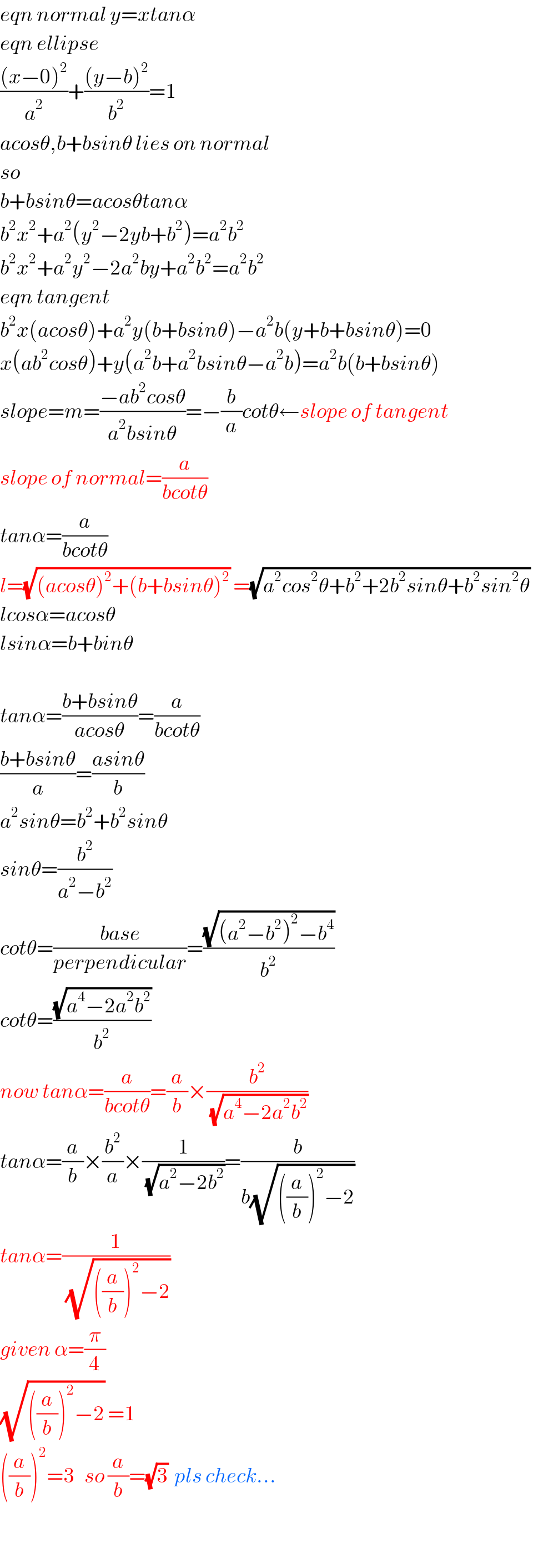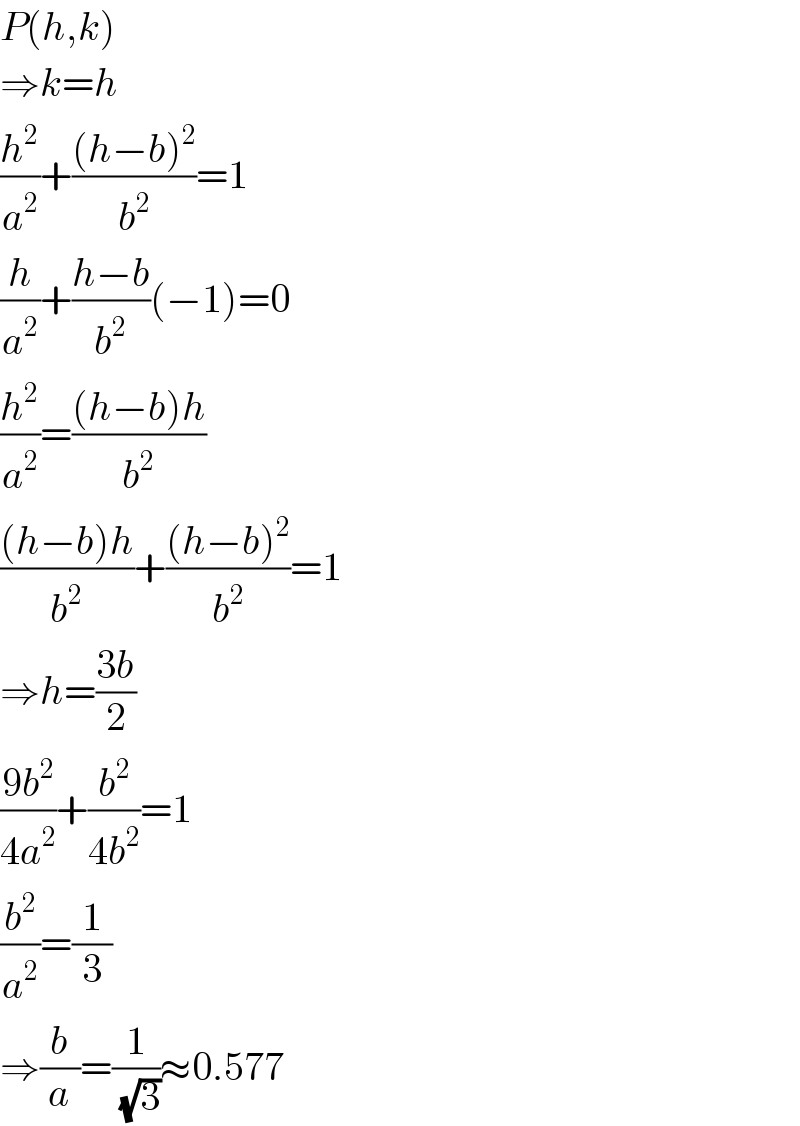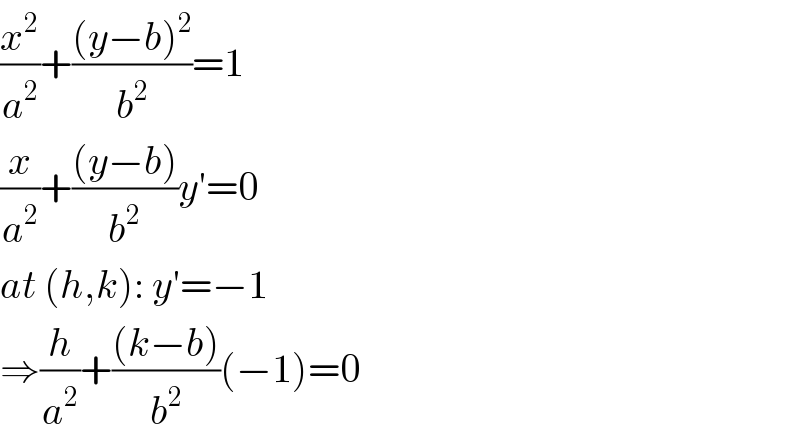
Question and Answers Forum
Question Number 50638 by ajfour last updated on 18/Dec/18

Commented by ajfour last updated on 18/Dec/18

Answered by tanmay.chaudhury50@gmail.com last updated on 18/Dec/18

Commented by MJS last updated on 18/Dec/18

Commented by tanmay.chaudhury50@gmail.com last updated on 18/Dec/18

Answered by mr W last updated on 18/Dec/18

Commented by mr W last updated on 18/Dec/18

Commented by ajfour last updated on 18/Dec/18

